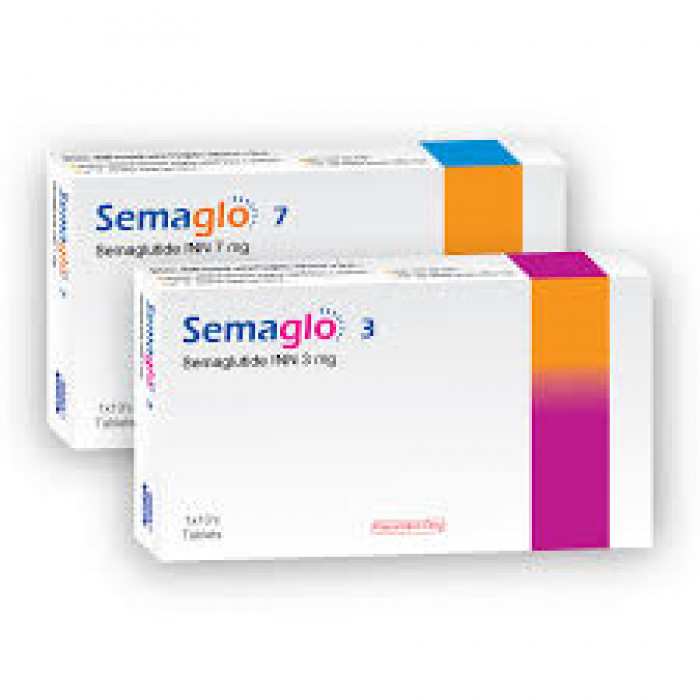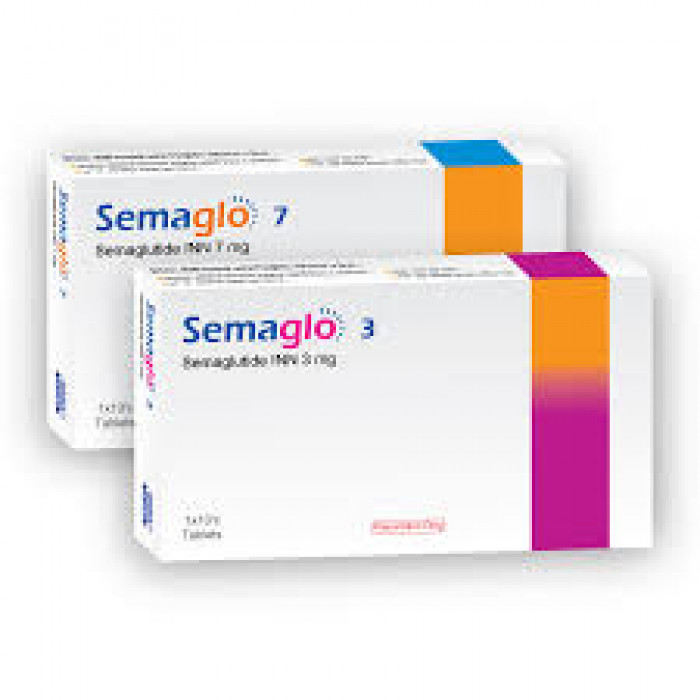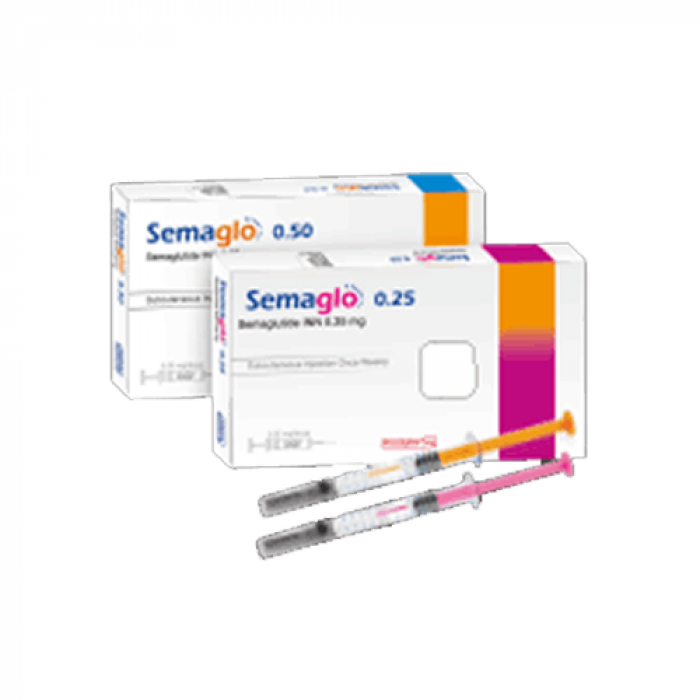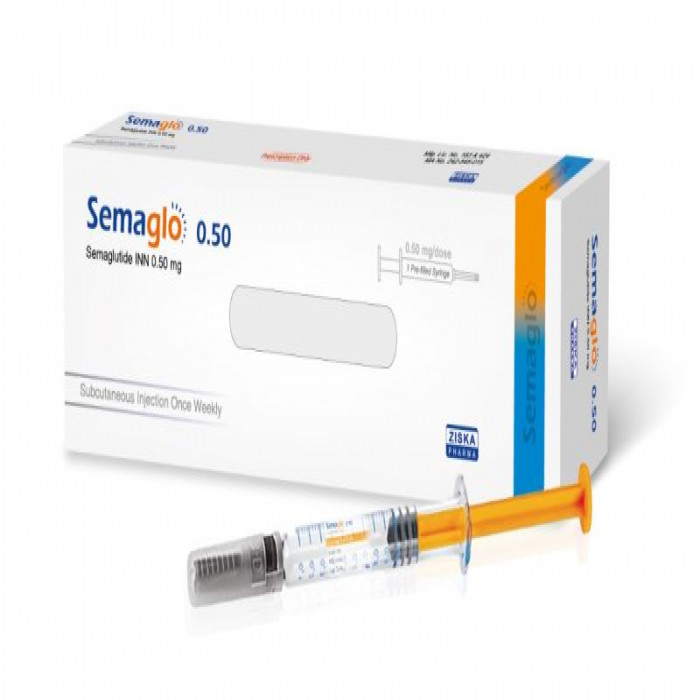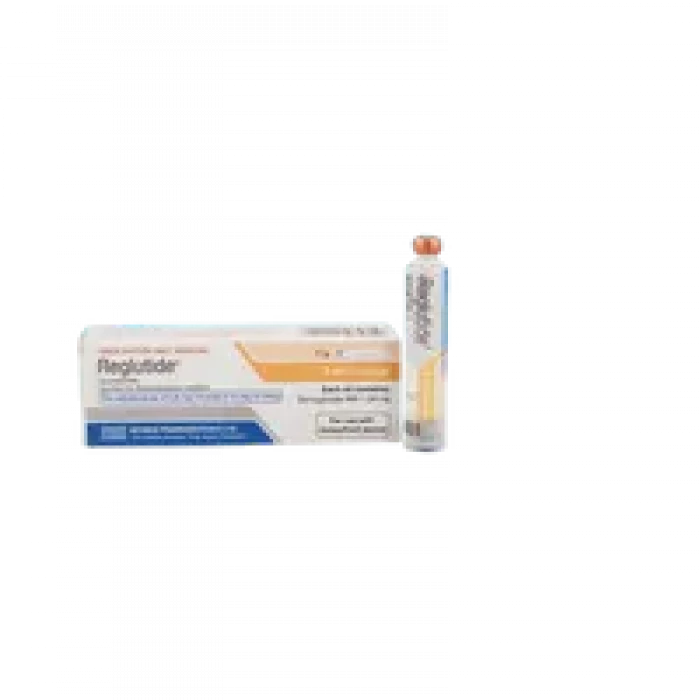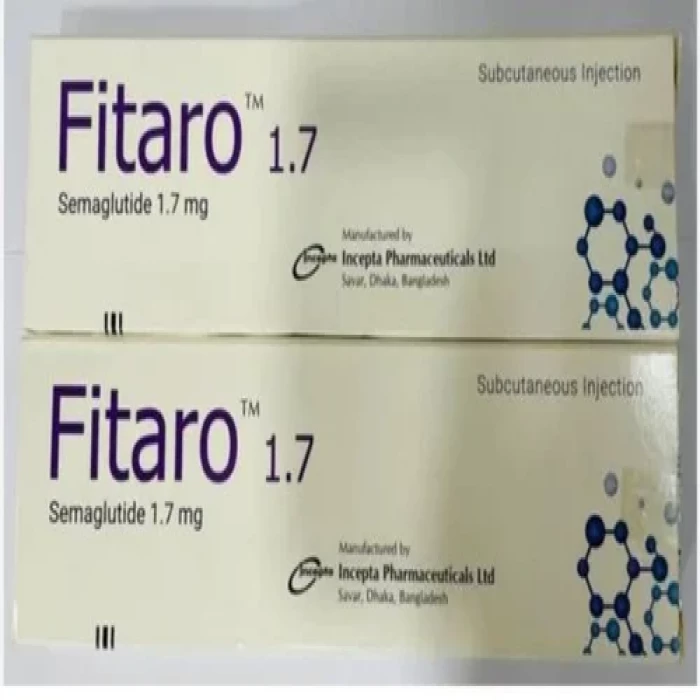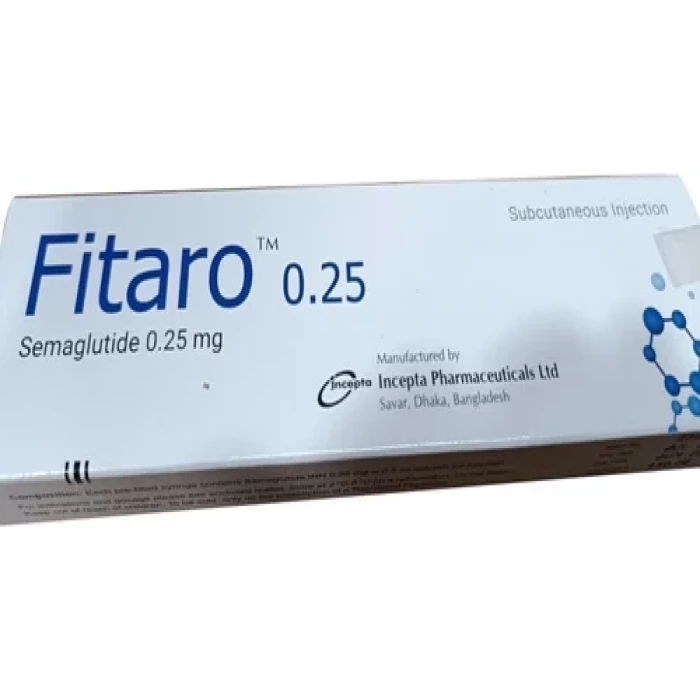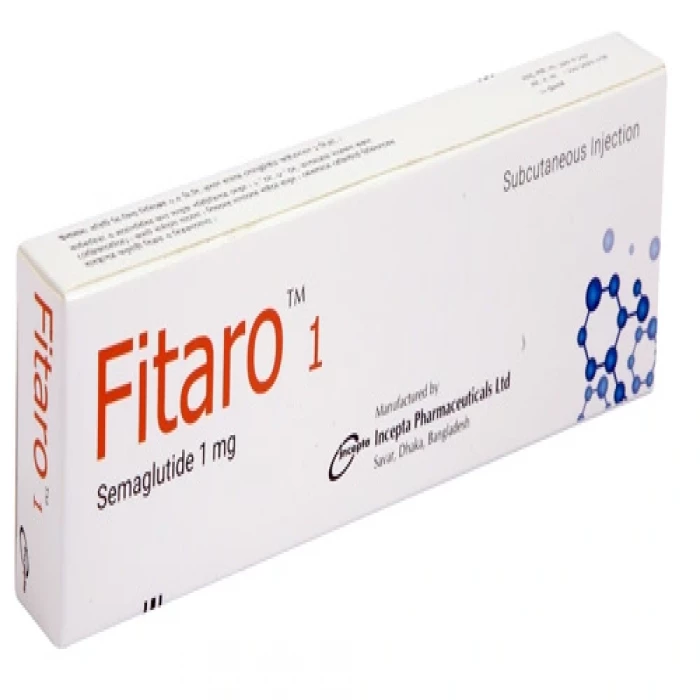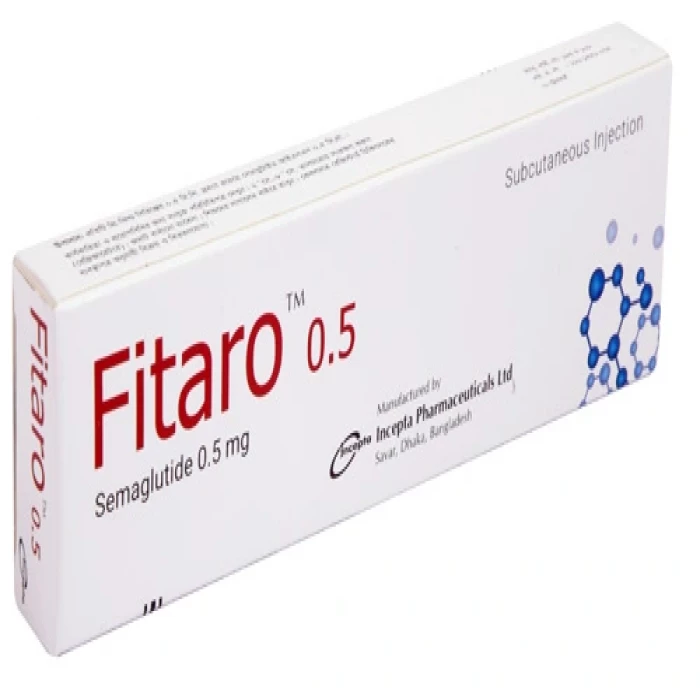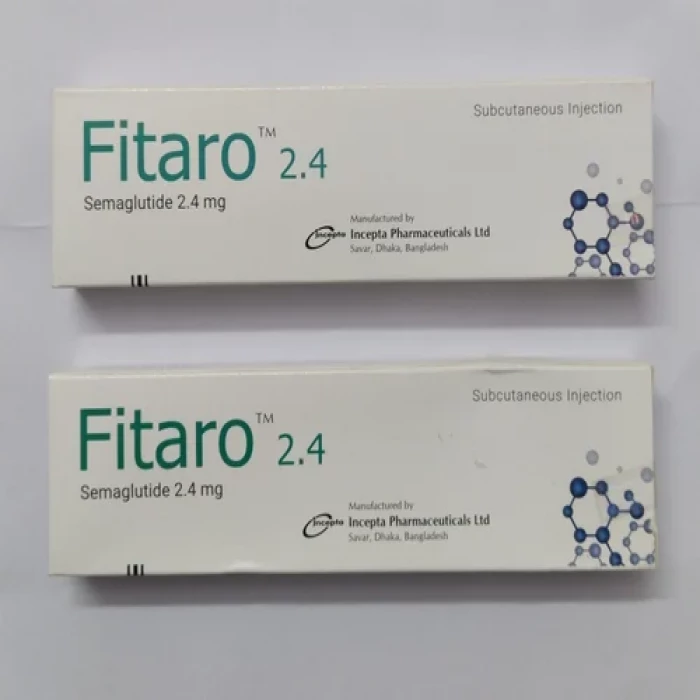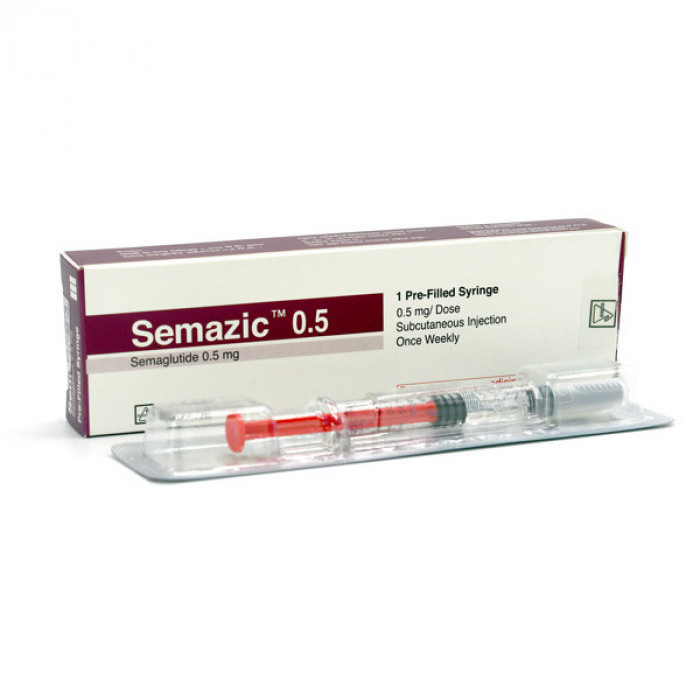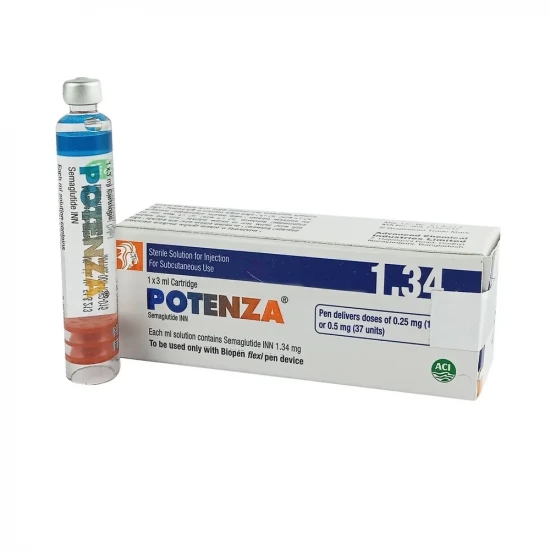
✔ 100% Authentic Product
👁️ Currently Viewing 1112
Semaglutide is a GLP-1 (glucagon-like peptide-1) analogue, with 94% similarity to human GLP-1. It works by:
- Stimulating insulin secretion and reducing glucagon release in a glucose-dependent manner, which helps lower blood sugar only when it is elevated.
- Slowing gastric emptying slightly, contributing to reduced post-meal glucose spikes.
- Suppressing appetite and reducing body fat, which aids in weight management.
Semaglutide does not impair glucagon secretion during hypoglycemia, maintaining safety in low blood sugar conditions.
Discount
Price: ৳ 4,900
MRP:
৳
5000
2%
Off

100% Genuine Products, Guaranteed

Safe & Secure Payments, Always

Fast, Secure & Efficient Delivery

Proper Packaging
 Cash on Delivery - All over Bangladesh
Cash on Delivery - All over Bangladesh Regular Delivery - 12-24 Hours, Dhaka City* Charge Tk.39-59
Regular Delivery - 12-24 Hours, Dhaka City* Charge Tk.39-59 Regular Delivery - 24-48 Hours, Other Cities* Charge Tk.99-110
Regular Delivery - 24-48 Hours, Other Cities* Charge Tk.99-110
 ফ্রি ডেলিভারিঃ - ৯৯৯ টাকা+ অর্ডারে, ঢাকা
শহরে
ফ্রি ডেলিভারিঃ - ৯৯৯ টাকা+ অর্ডারে, ঢাকা
শহরে ফ্রি ডেলিভারিঃ - ২৯৯৯ টাকা+ অর্ডারে, ঢাকার
বাহিরে
ফ্রি ডেলিভারিঃ - ২৯৯৯ টাকা+ অর্ডারে, ঢাকার
বাহিরে
100% Genuine Products, Guaranteed
Safe & Secure Payments, Always
Fast, Secure & Efficient Delivery
Proper Packaging
 Cash on Delivery - All over Bangladesh
Cash on Delivery - All over Bangladesh Regular Delivery - 12-24 Hours, Dhaka City* Charge Tk.39-59
Regular Delivery - 12-24 Hours, Dhaka City* Charge Tk.39-59 Regular Delivery - 24-48 Hours, Other Cities* Charge Tk.99-110
Regular Delivery - 24-48 Hours, Other Cities* Charge Tk.99-110 ফ্রি ডেলিভারিঃ - ৯৯৯ টাকা+ অর্ডারে, ঢাকা
শহরে
ফ্রি ডেলিভারিঃ - ৯৯৯ টাকা+ অর্ডারে, ঢাকা
শহরে ফ্রি ডেলিভারিঃ - ২৯৯৯ টাকা+ অর্ডারে, ঢাকার
বাহিরে
ফ্রি ডেলিভারিঃ - ২৯৯৯ টাকা+ অর্ডারে, ঢাকার
বাহিরে
✅ Description:
For Type 2 Diabetes Mellitus (T2DM):
- As an adjunct to diet and exercise to improve blood glucose control in adults.
- To reduce the risk of major adverse cardiovascular events in adults with T2DM and established cardiovascular disease.
For Obesity or Overweight Adults:
- In combination with a reduced-calorie diet and increased physical activity for chronic weight management in:
- Adults with BMI ≥30 kg/m² (Obesity).
- Adults with BMI ≥27 kg/m² (Overweight) who also have at least one weight-related comorbidity (e.g., hypertension, T2DM, or dyslipidemia).
✔️ Subcutaneous (SC) Injection:
Inject into the abdomen, thigh, or upper arm.
Administer once weekly, same day each week, with or without meals.
Rotate injection sites within the same body region weekly.
The dosing day may be adjusted if needed, ensuring at least 48–72 hours between doses.
✔️ Dosage & Administration
For T2DM:
Starter dose: 0.25 mg once weekly for 4 weeks.
Maintenance dose: Increase to 0.5 mg once weekly.
Further titration: After at least 4 weeks at 0.5 mg, may increase to 1 mg weekly if additional glycemic control is required.
Switching between forms:
Patients on 0.5 mg SC injection can transition to 7 mg or 14 mg oral tablets up to 7 days after the last injection.
Patients on 14 mg oral tablets can switch to 0.5 mg SC injection starting the day after the last tablet dose.
For Obesity:
Initial dose: 0.25 mg SC once weekly for 4 weeks.
Maintenance: Gradually increase to 2.4 mg once weekly. Temporary dose reduction to 1.7 mg may be considered for tolerance issues.
Max recommended weekly dose: 2.4 mg.
Oral Semaglutide (Tablet):
Take 30 minutes before the first meal, beverage, or oral medication, with up to 118 ml (4 oz) plain water.
Starter dose: 3 mg daily for 30 days.
Maintenance: Increase to 7 mg daily; if further control needed, up to 14 mg daily.
✔️ Special Population
Children <18 years: Safety and efficacy not established.
Elderly: No dose adjustment required.
Renal impairment: No adjustment for mild to severe; not recommended for end-stage renal disease.
Hepatic impairment: No adjustment needed, but exercise caution.
✔️ Overdose Management
Symptoms: Nausea, vomiting, dizziness, abnormal heartbeats.
No specific antidote; provide supportive care based on clinical signs.
Dose adjustments may be needed when combined with other diabetes medications.
Missed dose: Take within 5 days; if more than 5 days, skip and resume regular schedule.
✔️ Side Effects
Common (>10%):
Nausea, hypoglycemia (when used with sulfonylureas/insulin), vomiting, diarrhea, abdominal pain, constipation, dyspepsia, flatulence.
Uncommon (1–10%):
Eructation, symptomatic hypoglycemia (monotherapy), gastroesophageal reflux, fatigue, dizziness, dysgeusia, injection site reactions.
Rare (<1%):
Gastritis, cholelithiasis, severe allergic reactions, anaphylaxis.
Severe or Life-Threatening:
Acute pancreatitis, severe hypoglycemia, renal injury, thyroid C-cell tumors (observed in animals).
✔️ Pregnancy & Lactation
Pregnancy: Limited human data; should only be used if benefits outweigh risks. Discontinue at least 2 months before planned pregnancy due to long half-life.
Lactation: Not recommended; potential accumulation in breast milk.
✔️ Interaction
Delays gastric emptying, which may affect the absorption of other oral medications.
Concomitant insulin or insulin secretagogue therapy increases the risk of hypoglycemia; dose reduction may be needed.
Food intake reduces oral Semaglutide exposure, so adherence to fasting administration is important.
✔️ Contraindications
Personal or family history of medullary thyroid carcinoma (MTC).
Patients with Multiple Endocrine Neoplasia type 2 (MEN 2).
Known hypersensitivity to semaglutide or any component of the formulation.
Pregnancy and lactation (not recommended).
✔️ Precautions & Warnings
Not for type 1 diabetes or diabetic ketoacidosis.
Monitor for hypoglycemia when used with insulin or insulin secretagogues (e.g., sulfonylureas). Dose adjustment may be necessary.
May cause increased heart rate; caution in patients with cardiovascular conditions.
Pancreatitis risk: Monitor for persistent severe abdominal pain, possibly radiating to the back.
Diabetic retinopathy: Rapid blood sugar improvement may temporarily worsen retinopathy.
Kidney function: Monitor in patients with dehydration or severe gastrointestinal symptoms.
Do not share injection pens; risk of blood-borne pathogen transmission.
Thyroid C-cell tumor risk observed in rodents; human relevance unknown.
⚠️Disclaimer:
At ePharma, we’re committed to providing accurate and accessible health information. However, all content is intended for informational purposes only and should not replace medical advice from a qualified physician. Please consult your healthcare provider for personalized guidance. We aim to support, not substitute, the doctor-patient relationship.




